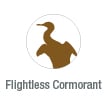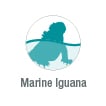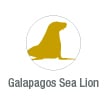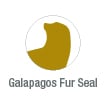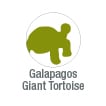Modern comfort meets fascinating exploration aboard Yacht La Pinta
Modern comfort meets fascinating exploration aboard Yacht La Pinta
There's so much to do in the Galapagos!
Yacht La Pinta’s selection of Galapagos itineraries provides the perfect opportunity to enjoy numerous, Galapagos National Park-approved activities. These range from hiking to kayaking, from paddleboarding to snorkeling. Eye-opening explorations are also featured aboard our glass-bottom boat and panga (dinghies) rides. All of these amazing experiences are included at no extra charge!
Galapagos Activities for the Entire Family
-
Activities
An excellent way to explore and discover the beauty of the Galapagos Islands is through the variety of activities approved by the Galapagos National Park. There are plenty of options for the entire family to enjoy, and Yacht La Pinta offers just about all of them: snorkeling, kayaking, paddleboarding, hiking, glass-bottom boat, and panga rides.
-
Snorkeling
Oh, the great many creatures and sites you’ll see and enjoy while snorkeling as part of your expedition aboard Yacht La Pinta! Dazzling arrays of fish, sea lions, sharks, sea turtles, and marine iguanas await just beneath the surface! What you’ll see underwater will fill you with awe. You’ll understand just why the Galapagos Islands and Marine Reserve are a UNESCO World Heritage Site.
-
Kayaking
There is so much life and activity just waiting for you on the surface, and the best way to observe these incredible moments involves taking to the crystal blue waters in a super fun kayak. As you paddle beside some remarkable scenery, you’ll never get bored watching any number of sea birds diving for their meals, just as gentle sea turtles suddenly appear beside you. You’ll find yourself in the heart of so much beauty to admire.
-
Paddleboarding
Find your center, both physically, and metaphorically as you glide along the clear, pristine waters of the Galapagos and glimpse down through the surface to view all of the marvelous activity beneath you. Frolicking sea lions, stunning schools of fish, and all sorts of rays are just a few of the things that await you on this adventure. Some folks call it a true balancing act. We call it “paddleboarding”.
-
Glass-bottom Boat
Whether you just want to stay dry or you just want to experience something truly unique, our glass-bottom boat is the experience for you. Hover along, lean forward, and look down. This is your true front-row seat to the visual symphony that lives just beneath the ocean’s surface. The movement of fish, sea lions, sea turtles, rays, sharks, and marine iguanas is a thing of beauty. Also, shielding yourself from the bright hot sun, under this boat’s canopy, makes for a pretty “cool” experience.
-
Island Exploration
The low ratio of guests per Galapagos Naturalist Guide is just one of many great features on offer when you travel aboard Yacht La Pinta. Each day, you and a small group of your fellow explorers will embark on a number of informative tours, as your Naturalist Guide shows you around these incredible sites, pointing out all of the different species on view and providing interesting facts about the archipelago’s native, and often endemic, creatures.
-
Coastal Exploration
One of the most curious and fascinating aspects of the Galapagos Islands is the topography. Often times, it is best seen and admired from the water. Your Naturalist Guide will point out all of the remarkable and picturesque features of the archipelago as you enjoy this thrilling panga-ride. And, to feel the cool sea breeze combined with the warm rays of the sun makes this a really enjoyable adventure.
Galapagos Wildlife
The Galapagos Islands is certainly the ideal destination if you’re looking for highly unique wildlife. Many of the animals in the Galapagos are endemic which is why the archipelago is such an interesting place to visit! Galapagos wildlife has a wide variety of animals that you can find across many islands but there are certain species that capture most interest. In order to get the most out of your Galapagos tour, we present the BIG15 Group of Iconic Species in the Galapagos, which rounds up the unmissable animals you have to see while you’re visiting the Enchanted Isles.
Yacht La Pinta guarantees that you will see a considerable portion of these iconic species on any one of its three different itineraries. We list every BIG15 you’ll get to see in each of our Galapagos itineraries.
Don't miss out on these iconic species in the Galapagos!
Galapagos Albatross
The largest bird species in the archipelago is the Galapagos (or waved) albatross. These migratory birds have a wingspan of 8.2 ft (2.5 m). From March to December, they can mostly be seen nesting and breeding on Española Island (in the southeastern part of the archipelago).
Galapagos Albatross
The largest bird species in the archipelago is the Galapagos (or waved) albatross. These migratory birds have a wingspan of 8.2 ft (2.5 m). From March to December, they can mostly be seen nesting and breeding on Española Island (in the southeastern part of the archipelago).
Blue-footed Booby
The blue-footed booby is one of three subspecies of boobies that inhabit the Galapagos Islands. They can measure up to 36 in (89 cm) in length. Their light blue beaks and turquoise feet (a result of their diet) make them readily identifiable. They are amazing divers and can often be seen zooming after fish underwater.
Blue-footed Booby
The blue-footed booby is one of three subspecies of boobies that inhabit the Galapagos Islands. They can measure up to 36 in (89 cm) in length. Their light blue beaks and turquoise feet (a result of their diet) make them readily identifiable. They are amazing divers and can often be seen zooming after fish underwater.
Nazca Booby
The Nazca booby is one of the more competitive iconic species in the Galapagos. Similar to its cousin the masked booby, the Nazca booby distinguishes itself by having black feet and a flatter, more¬-orange-than-yellow beak. These birds can be seen nesting along the shores of Genovesa, Española, and Floreana Islands, fairly inland, (up to 325 ft (100 m) from shore).
Nazca Booby
The Nazca booby is one of the more competitive iconic species in the Galapagos. Similar to its cousin the masked booby, the Nazca booby distinguishes itself by having black feet and a flatter, more¬-orange-than-yellow beak. These birds can be seen nesting along the shores of Genovesa, Española, and Floreana Islands, fairly inland, (up to 325 ft (100 m) from shore).
Red-footed Booby
The red-footed booby can be seen most easily on Genovesa Island and at the eastern tip of San Cristobal Island, at Punta Pitt. These white- and brown- feathered birds can reach up to 30 in (77 cm) in length. They tend to nest in the branches of low-level trees and bushes. Females lay just one egg. Should this egg be lost, they may lay another within 10 to 40 days.
Red-footed Booby
The red-footed booby can be seen most easily on Genovesa Island and at the eastern tip of San Cristobal Island, at Punta Pitt. These white- and brown- feathered birds can reach up to 30 in (77 cm) in length. They tend to nest in the branches of low-level trees and bushes. Females lay just one egg. Should this egg be lost, they may lay another within 10 to 40 days.
Flightless Cormorant
The flightless cormorant is the largest of its species. A lack of land-based predators has perhaps contributed to its evolution and inability to fly. Its body size provides greater lung capacity, thus making it a very capable diver. The flightless cormorant typically feeds on eels, octopus, and small fish, which it finds along the ocean floor. Females often abandon their offspring, leaving the males to raise them on their own.
Flightless Cormorant
The flightless cormorant is the largest of its species. A lack of land-based predators has perhaps contributed to its evolution and inability to fly. Its body size provides greater lung capacity, thus making it a very capable diver. The flightless cormorant typically feeds on eels, octopus, and small fish, which it finds along the ocean floor. Females often abandon their offspring, leaving the males to raise them on their own.
American Flamingo
The signature pink plumage of the American flamingo is a result of a diet rich in carotenoids. Their small, mandibular lamellae plates can process large amounts of miniscule food in substantial quantities. Adults take part in a beautiful and interesting mating ritual; extending their necks upwards and flashing the tips of their wings, often deep pink and black, in an effort to attract their mate.
American Flamingo
The signature pink plumage of the American flamingo is a result of a diet rich in carotenoids. Their small, mandibular lamellae plates can process large amounts of miniscule food in substantial quantities. Adults take part in a beautiful and interesting mating ritual; extending their necks upwards and flashing the tips of their wings, often deep pink and black, in an effort to attract their mate.
Frigatebirds: Great and Magnificent
Coexisting in the Galapagos, great and magnificent frigatebirds can be seen throughout much of the archipelago. While magnificent frigates seek their food further out at sea, their great counterparts stick closely to the coast. Magnificent frigates are the largest of their species. Also, distinctive features among magnificent frigates include a larger red gullar sack for males and a white “M” visible on the underside of the females.
Frigatebirds: Great and Magnificent
Coexisting in the Galapagos, great and magnificent frigatebirds can be seen throughout much of the archipelago. While magnificent frigates seek their food further out at sea, their great counterparts stick closely to the coast. Magnificent frigates are the largest of their species. Also, distinctive features among magnificent frigates include a larger red gullar sack for males and a white “M” visible on the underside of the females.
Galapagos Hawk
One of the youngest species in the archipelago, the Galapagos hawk arrived in the islands approximately 300,000 years ago. Today, there are around 150 breeding pairs in the region. They have a wingspan that ranges between 46 in (116 cm) and 55 in (140 cm), depending on the island they call home. This large bird of prey sits at the top of the food chain as the only native apex predator in the Galapagos Islands.
Galapagos Hawk
One of the youngest species in the archipelago, the Galapagos hawk arrived in the islands approximately 300,000 years ago. Today, there are around 150 breeding pairs in the region. They have a wingspan that ranges between 46 in (116 cm) and 55 in (140 cm), depending on the island they call home. This large bird of prey sits at the top of the food chain as the only native apex predator in the Galapagos Islands.
Land Iguana
The most widely-distributed of the land iguanas in the Galapagos, these fascinating creatures have a life expectancy of around 50 to 60 years and can weigh as much as 30 lbs (13 kg). Their population was endangered by invasive mammals, such as rats, feral dogs, and feral cats, until the Galapagos National Park was finally able to eradicate introduced species, resulting in their successful recovery. They have since been reintroduced to certain islands like Baltra, from where they had all but disappeared.
Land Iguana
The most widely-distributed of the land iguanas in the Galapagos, these fascinating creatures have a life expectancy of around 50 to 60 years and can weigh as much as 30 lbs (13 kg). Their population was endangered by invasive mammals, such as rats, feral dogs, and feral cats, until the Galapagos National Park was finally able to eradicate introduced species, resulting in their successful recovery. They have since been reintroduced to certain islands like Baltra, from where they had all but disappeared.
Marine Iguana
One of the most interesting examples of evolutionary biology in the Galapagos is the marine iguana. Though this species started out on land, it has adapted to a marine habitat over time. Marine Iguanas have an average lifespan around 40 years. Marine iguanas are found throughout the archipelago and vary in both color and size from island to island.
Marine Iguana
One of the most interesting examples of evolutionary biology in the Galapagos is the marine iguana. Though this species started out on land, it has adapted to a marine habitat over time. Marine Iguanas have an average lifespan around 40 years. Marine iguanas are found throughout the archipelago and vary in both color and size from island to island.
Santa Fe Land Iguana
With its distinct golden yellow and brown color, the Santa Fe land iguana features a smaller dorsal spine and can only be found on its namesake island. The prickly pear cactus is the primary food source of the Santa Fe land iguana. They can weigh upwards of 26 lbs (11 kg). Females tend to lay 3 to 11 eggs, which take about 50 days to hatch.
Santa Fe Land Iguana
With its distinct golden yellow and brown color, the Santa Fe land iguana features a smaller dorsal spine and can only be found on its namesake island. The prickly pear cactus is the primary food source of the Santa Fe land iguana. They can weigh upwards of 26 lbs (11 kg). Females tend to lay 3 to 11 eggs, which take about 50 days to hatch.
Galapagos Penguin
As the only penguin to be found in the Northern Hemisphere, the Galapagos penguin is truly remarkable. This species is the second smallest of its kind, and weighs only about 4.4 lbs (2 kg). Females lay eggs up to three times a year, but have no set breeding schedule. When food is abundant, they can raise up to two chicks. Being that the Galapagos penguin has no sweat gland, when it gets hot, they seek shade or spend more time in the water. Their population has been cut in half since the early 1970s due in part to several intense occurrences of El Niño in the 1980s and 1990s.
Galapagos Penguin
As the only penguin to be found in the Northern Hemisphere, the Galapagos penguin is truly remarkable. This species is the second smallest of its kind, and weighs only about 4.4 lbs (2 kg). Females lay eggs up to three times a year, but have no set breeding schedule. When food is abundant, they can raise up to two chicks. Being that the Galapagos penguin has no sweat gland, when it gets hot, they seek shade or spend more time in the water. Their population has been cut in half since the early 1970s due in part to several intense occurrences of El Niño in the 1980s and 1990s.
Galapagos Sea Lion
Galapagos sea lions are found throughout most of the archipelago. July to April generally marks their breeding period. Male sea lions can weigh around 440 lbs (200 kg). In contrast, females average around 165 lbs (75 kg). Males actively defend their harems for lengthy stretches of time. Female sea lions are often seen with their pups for anywhere from one to three years. This varies from island to island. They are excellent divers and can descend to depths of up to 1,900 ft (580 m).
Galapagos Sea Lion
Galapagos sea lions are found throughout most of the archipelago. July to April generally marks their breeding period. Male sea lions can weigh around 440 lbs (200 kg). In contrast, females average around 165 lbs (75 kg). Males actively defend their harems for lengthy stretches of time. Female sea lions are often seen with their pups for anywhere from one to three years. This varies from island to island. They are excellent divers and can descend to depths of up to 1,900 ft (580 m).
Galapagos Fur Seal
The smallest seal is the Galapagos fur seal. Females tend to weigh around 66 lbs (30 kg) while males clock in around 176 lbs (80 kg). Breeding season takes place from September to December. During this time, males defend their territories for stretches of two weeks to a month, their fat reserves come in handy during this time. Pups tend to remain with their mothers for two or three years. The Galapagos fur seal hunts for food (squid and fish) at depths of around 200 to 330 ft (60 to 100 m).
Galapagos Fur Seal
The smallest seal is the Galapagos fur seal. Females tend to weigh around 66 lbs (30 kg) while males clock in around 176 lbs (80 kg). Breeding season takes place from September to December. During this time, males defend their territories for stretches of two weeks to a month, their fat reserves come in handy during this time. Pups tend to remain with their mothers for two or three years. The Galapagos fur seal hunts for food (squid and fish) at depths of around 200 to 330 ft (60 to 100 m).
Galapagos Giant Tortoise
Galapagos giant tortoises are gentle creatures and avid plant-eaters. Once, they numbered as many as 200,000 before hunters and whalers vastly decimated a large number of this subspecies. The tortoises inhabit 12 of the islands in the archipelago. Fortunately, there are a handful of really important breeding centers on Isabela, San Cristóbal, and Santa Cruz Islands that have worked hard to help the Galapagos giant tortoise population recover. It is estimated that there are currently around 20,000 giant tortoises in the Galapagos.
Galapagos Giant Tortoise
Galapagos giant tortoises are gentle creatures and avid plant-eaters. Once, they numbered as many as 200,000 before hunters and whalers vastly decimated a large number of this subspecies. The tortoises inhabit 12 of the islands in the archipelago. Fortunately, there are a handful of really important breeding centers on Isabela, San Cristóbal, and Santa Cruz Islands that have worked hard to help the Galapagos giant tortoise population recover. It is estimated that there are currently around 20,000 giant tortoises in the Galapagos.




